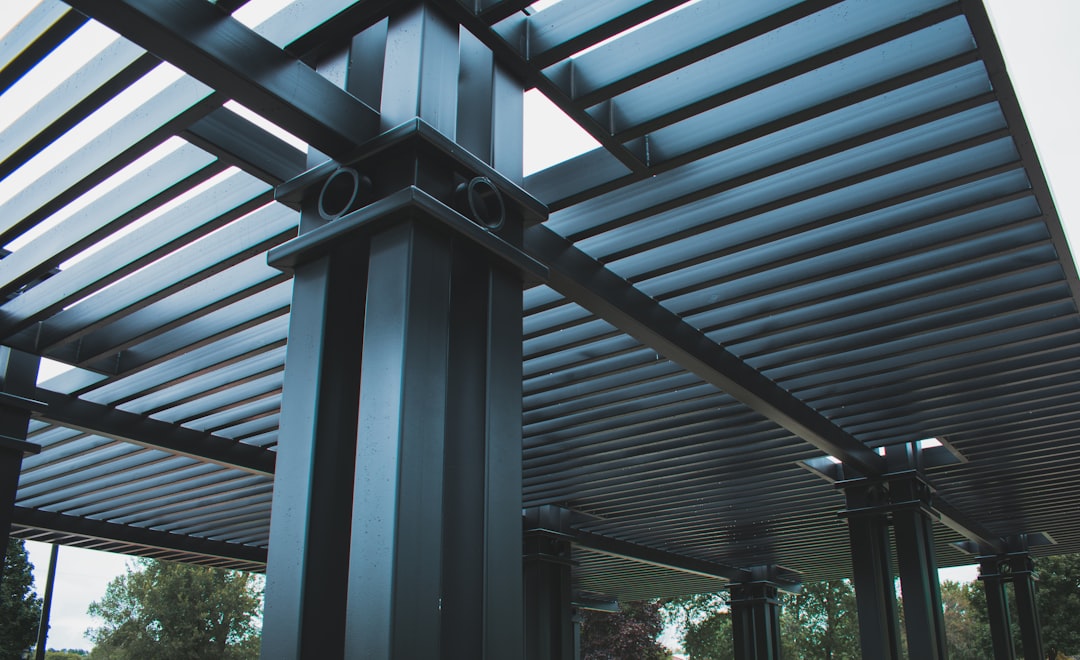What is it about?
The circular economy (CE) is an environmentally friendly solution that is based on the reuse and recycling of products. It aims at releasing harmless products back into the environment and can benefit sectors with high carbon dioxide (CO2) emissions, like building construction. However, the major challenge is to align the built environment or the manmade structures and buildings with CE strategies. This paper explains how CE practices can reduce carbon content in the built environment. The CO2 savings were determined for an existing “living” building and involved three strategies. First, building materials should be biodegradable and salvaged to reduce their carbon input. Second, the materials should be used for a longer period of time. Third, carbon should be captured. The authors found that including these strategies in CE practices reduced the building's carbon emissions by 30%.
Featured Image

Photo by CHUTTERSNAP on Unsplash
Why is it important?
Reducing a building’s embodied carbon, which is the CO2 produced during construction, use, and tear-down, will save a large portion of CO2 emissions. However, research has mostly focused on operational carbon, which is the CO2 produced from energy use. Renewable energy and more energy-efficient buildings have lowered the overall carbon footprint. It is estimated that CE strategies can reduce the built environment’s CO2 emissions by 3 gigatons (Gt) beyond 2050. There is also a great scope for CE strategies to reduce raw materials used in the built environment. This article suggests that making small changes in the existing CE design could further reduce CO2 emissions from the built environment. Future research should focus on including CE principles into building design and improving the shelf life of building materials. KEY TAKEAWAY: CE practices in building construction require modest design changes but can produce large CO2 emissions savings. This is important as the CE can help change the market and drive innovation. This research relates to the following Sustainable Development Goals: • SDG 13: Climate Action • SDG 9: Industry, Innovation, and Infrastructure • SDG 11: Sustainable Cities and Communities • SDG 12: Responsible Consumption and Production • SDG 7: Affordable and Clean Energy
Read the Original
This page is a summary of: Circular Design and Embodied Carbon in Living Buildings: The Missing Potential, Journal of Architectural Engineering, September 2023, American Society of Civil Engineers (ASCE),
DOI: 10.1061/jaeied.aeeng-1445.
You can read the full text:
Resources
SDG Showcase: Goal 13 – Climate action
More plain language summaries of research relevant to Sustainable Development Goal 13: Climate Action - brought to you by the SDG Knowledge Cooperative
SDG Showcase: Goal 9 – Industry, Innovation, and Infrastructure
More plain language summaries of research relevant to Sustainable Development Goal 9: Industry, Innovation and Infrastructure - brought to you by the SDG Knowledge Cooperative
SDG Showcase: Goal 11 – Sustainable Cities and Communities
More plain language summaries of research relevant to Sustainable Development Goal 11: Sustainable Cities and Communities
SDG Showcase: Goal 12 – Responsible Consumption and Production
More plain language summaries of research relevant to Sustainable Development Goal 12: Responsible Consumption and Production
SDG Showcase: Goal 7 – Affordable and Clean Energy
More plain language summaries of research relevant to Sustainable Development Goal 7: Affordable and Clean Energy
SDG Knowledge Cooperative
More plain language summaries of research relevant to all the Sustainable Development Goals.
ASCE's SDG Showcase
Explore a selection of ASCE research relating to sustainable development goals, explained in plain language by professional science writers.
Contributors
The following have contributed to this page










